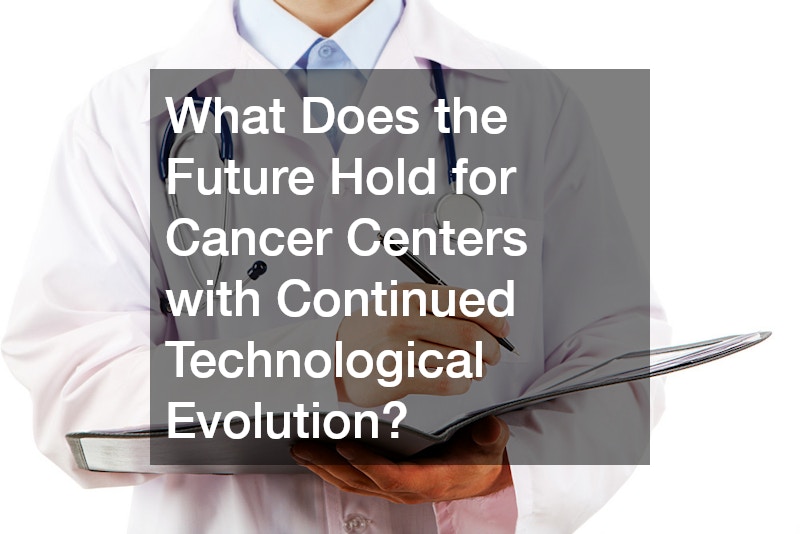In recent years, evolving technologies have played a transformative role in cancer diagnosis, treatment, and patient care. From advanced imaging techniques to personalized medicine, modern cancer centers are witnessing a revolution in how cancer is managed and treated. In this article, we explore how technological advancements can impact a cancer center.
1. What are the Latest Technological Innovations in Cancer Centers?
a. Overview of Cutting-edge Diagnostic Tools
One of the primary innovations in cancer centers is the use of advanced imaging technology such as MRI and PET scans, which provide detailed insights into the body’s internal structures. Genetic profiling techniques are further empowering oncologists to identify specific cancer mutations, leading to more targeted treatment approaches.
With these technological advancements, cancers can be detected at earlier stages, often before symptoms even appear. This progress significantly enhances the likelihood of successful treatment and better patient outcomes.
Precision diagnostics exemplify how technology is revolutionizing traditional medical practices by enabling clinicians to visualize cellular processes in unprecedented detail. This innovation not only improves diagnostic accuracy but also aids in monitoring the effectiveness of treatments over time.
b. Breakthroughs in Treatment Modalities
Precision medicine has emerged at the forefront of cancer treatment, tailoring therapies to the individual characteristics of each patient. Immunotherapy, another breakthrough, harnesses the body’s immune system to fight cancer cells more effectively than conventional treatments.
Targeted therapies are designed to attack specific cancer cells without affecting normal cells, minimizing side effects and improving patient experience. These methods are creating a new horizon in oncological care, increasing hope for patients with previously untreatable cancers.
Clinical trials and research studies continually expand the arsenal of tools available to oncologists, offering new combinations and sequences of therapies. Each innovation contributes to a more comprehensive and multi-faceted approach to fighting cancer.
2. How Do These Technologies Improve Patient Outcomes?
a. Enhanced Accuracy in Diagnosis
The integration of high-tech diagnostic tools leads to more precise and accurate cancer detection at its earliest stages. With accurate staging, oncologists can develop personalized treatment plans that significantly enhance the likelihood of successful outcomes.
Personalized treatment plans not only align therapies with the genetic profile of a tumor but also consider the patient’s personal health and lifestyle factors. This tailored approach ensures that patients receive the most effective treatment with the least amount of adverse effects.
The emergence of machine learning and artificial intelligence in diagnosing cancer means that predictive models can now be used to anticipate disease progression, allowing timely intervention. Technological tools, therefore, play a crucial role in not only detection but also ongoing patient management.
b. Increased Survival Rates and Quality of Life
A marked increase in survival rates has been observed with the adoption of advanced cancer treatments. Many studies showcase the dramatic improvements in patient lifespans and quality of life through targeted therapies and precision medicine.
Statistics from recent clinical trials highlight significant survival benefits brought about by novel therapies. For example, the integration of immunotherapy has resulted in extended remission times for patients with metastatic melanoma.
Case studies complement these statistics, offering real-world evidence of patients who have thrived against the odds. Long-term survivorship and decreased recurrence rates are becoming more common outcomes thanks to technological advancements in cancer treatment.
3. What Challenges Do Cancer Centers Face When Implementing New Technologies?
a. Financial and Resource Constraints
The implementation of cutting-edge technologies requires significant financial investment, posing challenges for healthcare facilities with limited budgets. Cost-benefit analysis becomes crucial in weighing the immediate expenses against long-term patient outcomes.
Resource allocation within cancer centers must be strategically planned to ensure all patients can access the benefits of technological advancements. This often involves seeking innovative funding solutions and partnerships to offset costs.
b. Training and Integration in Existing Systems
Another significant challenge lies in the training required for healthcare professionals to effectively use new technologies. Staff education is essential to leverage the full potential of innovations in diagnostics and treatment.
Integrating new technology into existing systems can be fraught with operational challenges, as legacy systems may not be immediately compatible with cutting-edge tools. This necessitates comprehensive planning and phased implementation to minimize disruptions.
4. How Are Patients and Healthcare Providers Adapting to Technological Changes?
a. Patient Adaptability and Engagement
Patients are increasingly tech-savvy and eager to engage with technologies that enhance their treatment experiences. From wearable health monitors to personalized treatment apps, technology fosters active patient involvement in their care.
Support systems, including tech tutorials and dedicated staff services, are critical in guiding patients through new technologies. By offering these resources, cancer centers alleviate anxiety and empower patients to take charge of their health journeys.
b. Healthcare Provider’s Role and Adaptation
For healthcare providers, the shift towards technology-driven care requires adaptation and a willingness to embrace change. Oncologists and support staff must constantly update their knowledge to stay abreast of technological innovations.
The role of healthcare providers is increasingly focused on collaborating with patients to develop personalized care plans that incorporate the latest technological advancements. This collaborative approach enhances the patient-provider relationship, fostering trust and communication.
5. What Does the Future Hold for Cancer Centers with Continued Technological Evolution?
a. Predictive Analytics and AI in Oncology
The future of oncology is set to be transformed by predictive analytics and artificial intelligence. These technologies enable clinicians to forecast disease progression and optimize treatment strategies for individual patients.
With AI, oncologists can process vast amounts of data from diverse sources, discovering new patterns and insights that enhance clinical decision-making. Predictive analytics allows for proactive interventions, potentially preventing disease development before it manifests.
b. The Role of Robotics and Virtual Reality
Robotics and virtual reality are set to play pivotal roles in the surgical and rehabilitative aspects of cancer care. Robotic systems offer unparalleled precision and control, enhancing the safety and efficacy of complex surgical procedures.
Virtual reality technologies offer immersive environments for patient education and rehabilitation, aiding recovery by simulating real-world activities in a controlled setting. This approach not only improves physical outcomes but also enhances mental well-being.
.






